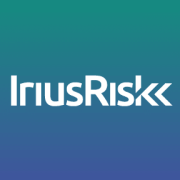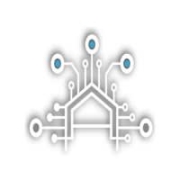Threat Modeling identifies and assesses potential threats to systems, applications, and networks. It helps organizations understand their security posture, enabling more informed decisions about safeguarding assets.
The top 5 Threat Modeling solutions are ThreatModeler Platform, IriusRisk, SD Elements, Arisiun and Devici, as ranked by PeerSpot users in September 2025. ThreatModeler Platform received the highest rating of 8.0 among the leaders, is the most popular solution in terms of searches by peers, and holds the largest mind share of 43.9%.
Threat Modeling guides organizations in evaluating their security landscape, helping identify risks and prioritize mitigative actions. By focusing on understanding potential threats and vulnerabilities, it enables creating effective protection strategies, aligning business processes with security objectives and maintaining compliance with industry standards.
What critical features should be considered?Industries with sensitive data, such as finance, healthcare, and government, often implement Threat Modeling to protect against data breaches. These sectors leverage Threat Modeling to maintain high security levels, ensuring customer trust and regulatory compliance.
Threat Modeling proves helpful for organizations by proactively identifying risks and prioritizing defenses. It enhances the protection of assets, data, and operations, aligning security efforts with business goals and improving resilience against potential attacks.
| Product | Market Share (%) |
|---|---|
| ThreatModeler Platform | 43.9% |
| IriusRisk | 43.9% |
| SD Elements | 6.1% |
| Other | 6.1000000000000085% |





Integrating Threat Modeling with DevSecOps involves embedding security practices into the development lifecycle, allowing you to identify and mitigate potential threats early in the process. By integrating Threat Modeling, you ensure that security is considered from the start, allowing for continuous assessment and adaptation as the software evolves. This proactive approach not only reduces vulnerabilities but also streamlines communication between development, security, and operations teams, ultimately speeding up deployment cycles.
What are the key benefits of automated Threat Modeling tools?Automated Threat Modeling tools significantly enhance the efficiency and accuracy of identifying potential threats. These tools allow you to quickly simulate various attack scenarios and identify vulnerabilities across your systems. By automating repetitive tasks, they save time and resources while providing a systematic approach to security. They also enable consistent documentation, making compliance and audits easier. Additionally, these tools facilitate cross-team collaboration and knowledge sharing, leading to a more secure overall system architecture.
How can Threat Modeling improve compliance with regulatory standards?Threat Modeling helps improve compliance by systematically identifying and addressing security risks that regulatory standards like GDPR, HIPAA, and PCI-DSS often require. By incorporating Threat Modeling in your processes, you can ensure that you have a thorough understanding of your system's security posture, allowing you to address specific compliance requirements effectively. It also helps in maintaining comprehensive documentation, demonstrating your commitment to proactive risk management during audits and regulatory reviews.
What are the most common challenges in implementing Threat Modeling?Common challenges in implementing Threat Modeling include the lack of skilled personnel, difficulty in integrating with existing development workflows, and resistance to change from teams accustomed to traditional processes. Additionally, scalability can be a problem for large organizations with complex systems. Overcoming these challenges requires training and a shift in mindset towards a security-first approach, encouraging buy-in from all stakeholders. Utilizing automated tools can also ease integration and scalability concerns.
How do you measure the success of a Threat Modeling process?Measuring the success of a Threat Modeling process involves evaluating the reduction in vulnerabilities and successful mitigation of risks identified through the model. You should track metrics such as the number of identified vs. remediated threats, incident response times, and the overall impact on application security posture. Feedback from development and security teams can provide insights into process improvements. Effective Threat Modeling should lead to fewer security incidents and increased confidence in your system's security.